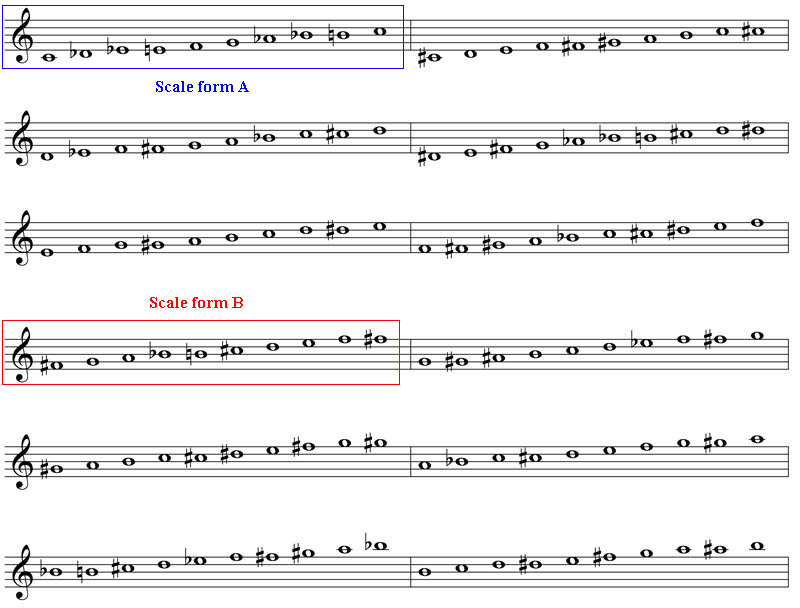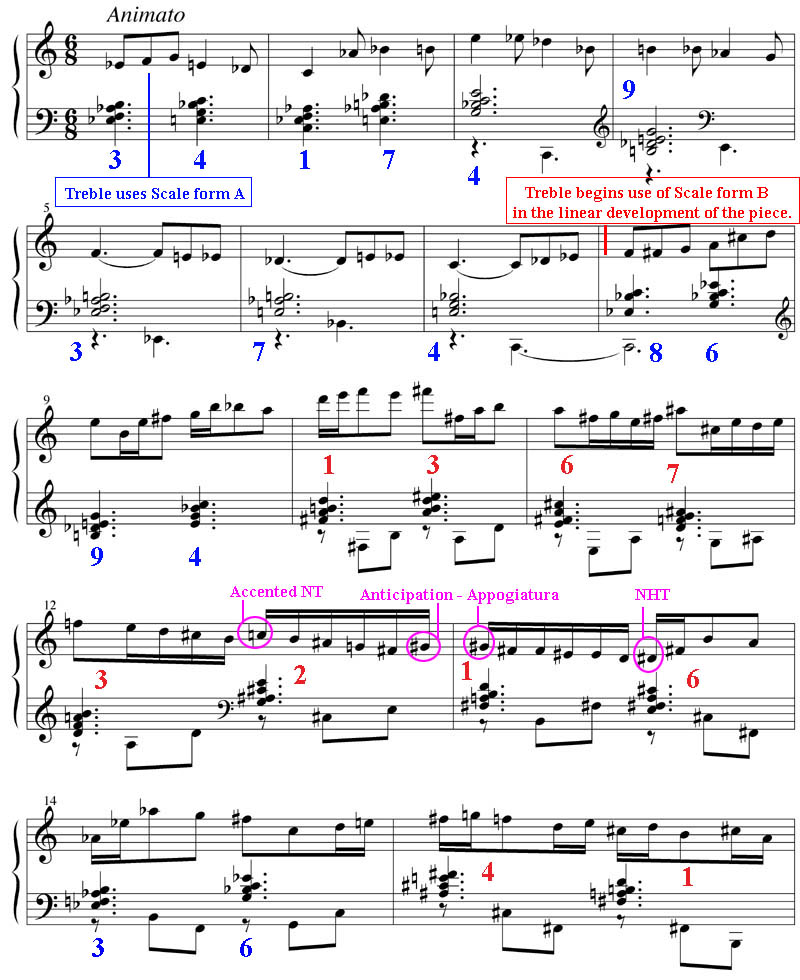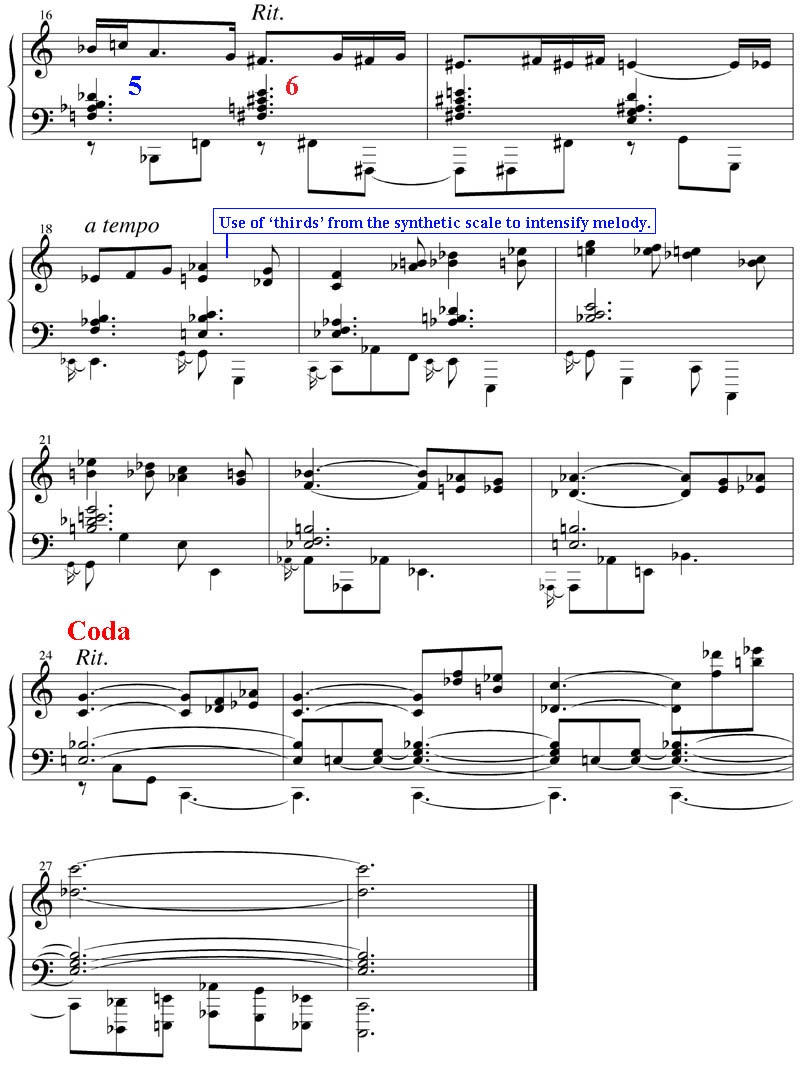1. A Quasi-Tonal Scale. Since we are preparing to compose a work with more of a tonal character, we need to develop a scale that can support such an interpretation. In this piece we will use a nine note scale (in only one form - ascending) comprised of two conjoined five note patterns derived from an interval succession of a minor 2nd, major 2nd, minor 2nd, and minor 2nd (separated by a major 2nd).
2. Triads. Implementing a practice from tertian-based music, we will derive a harmonic vocabulary by creating triads using alternating notes from the scale (the numbers below represent the roots).
3. Seventh Chords. Using the same process as with the triads, we can derive tetrachords by adding the seventh note above each root. Note that the chords could be respelled diatonically, but this would not correspond with the theoretical premise as illustrated here. In the writing of our composition, however, there will be greater license in this area.
4. Transpositions. Here we have laid out a table displaying all of the transpositions of our synthetic scale. As with the lyrical piece, for the sake of comparison, we will limit use to only two transpositions separated by a tritone.
5. Writing the Piece. For the sake of analysis, many of the chords supporting the linear development in this piece are kept in a close voicing and in 'root position'. Each sonority is labeled by number and color correlating to the root and scale from which it is derived. Without functional cadences, there exist no clear delineations of sections in this piece. However, a sense of tripartite form is attained through the use of different scale transpositions and a modified texture, both of which change in stages.
In bar 8 we notice the use of scale form B in the treble while the supporting voices remain in the original transposition. At this point, the linear material has become more florid and a new, distinct section is emerging. By bar 10 the accompanying chords are also derived from this transposed form of the scale, although there are some occurrences of the form A sonorities (functioning almost like secondary dominants in tonal music). In this second section, we also observe the use of non-harmonic tones. Similarly to their tonal counterparts, these pitches clearly stand out from their surrounding sonorities and create a need for 'resolution' to one of the scale steps.
At bar 18, we have returned to the material of the first section, both in terms of scale form, accompanying sonorities, and texture. However, the temperament of the more propulsive second section is maintained to some degree by a rhythmic elaboration in the bass voice. As well, the Common Practice method of using parallel thirds to intensify and amplify the character of a melody is applied here similarly to how we developed our harmonic vocabulary.
A simple coda is added in which the tempo gradually comes to a halt and the harmonic progression arrives at its only true cadential point in the piece.
mp3 download (piano version)








